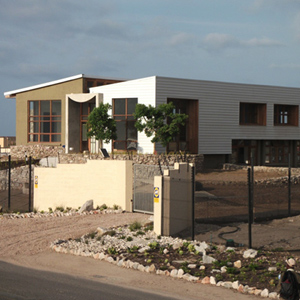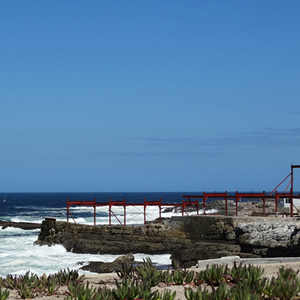History
-
1984

It all started at a party
Veterinarian Dr Hugo attended a party at Brian McFalane’s house about 30 years ago where the topic mainly revolved around a diver’s struggle to fill their abalone quotas.
-
1984

Finding a solution
The discussion at the party left Dr Hugo with a burning interest in breeding abalone to put back in the ocean. He decided to approach various possible locations where he could perform various trials and efforts.
-
1984

A process of trial and error
The proposal of the Marine pool was turned down and they approached the Chairman of the old Harbour Council. He agreed in return that Dr Hugo would return spat to the sea to help replenish the abalone numbers.
-
1984

The experiments continue
Dr Hugo applied for an experimental license and got permission to build in the old Harbour. They took a huge interest in Dr Hugo’s project and developed a trust providing funding towards the building in the Old Harbour.
-
1991

Abagold is up and running
A pilot hatchery was set up.
-
1993

Abalone is set free
A permit was received to cultivate, harvest and sell abalone and 500 000 abalone larvae were released into the Old Harbour for re-seeding.
-
1993

Humble Beginnings
Starting with only four staff members, Dr Pierre Hugo and Andrew Grant (First shareholders).
-
1994

Growing by the day
The farm in the harbour soon expanded and space was limited. Dr Hugo was granted a lease over ground in the New Harbour which is known as Sea View farm today.
-
1998

The beginning of Sea View
Sea View, the location of the sump proposed and plans to remove rocks were drawn up. It took eight months to clear Sea View by hand. It began with 12 tanks on the grass covered quad that we know today.
-
1999

Abagold’s new investors
The growth of the business lead Johannes Hamman, Paul Kruger, Etienne Rossouw and Johan van Dyk to become involved.
-
1999

Off to the Far East
The first 100kg of live farmed abalone is exported to the Far East.
-
2002

Every cent counts
R35 million is raised through a share issue and bank loans to finance the purchase and construction of Bergsig abalone farm in Hermanus.
-
2003

Expanding the farm
The first of 1 000 tanks are placed on Bergsig.
-
2003

A name to fit the products
Hermanus Abalone (Pty) Ltd changes its name to Abagold (Pty).
-
2006

A new piece of gold
Abagold’s world-class processing facility is commissioned and the first dried abalone is exported.
-
2007

Broadening Horizons
Abagold secures the lease for a 6.4 hectare site in Hermanus in partnership with the Overstrand Municipality and local communities for the development of an integrated aquaculture project.
-
2011

Third farm up and running
Amaza is fully developed with a capacity of 7 500 baskets.
-
2011

Project Sulamanzi
Construction of the ambitious Sulamanzi project is started including a new water treatment dam and secondary pump house.
-
2011

Our first of many awards
Abagold’s processing facility is awarded the prestigious Hazard Analysis and Critical Control Points Systems (HACCP) certification.
-
2011

Lending a hand to the community
The Abagold Development Trust was formed to establish educational activities, development programmes, job creation in the Hermanus area and to advance community upliftment in Mount Pleasant, Hawston and Zwelihle.
-
2012

Abalone moving to a new home
The first of 15 units on Sulamanzi is commissioned and 2 million abalone are moved onto the farm.
-
2013

Moving to a new office
The newly built Head Office on the Sulamanzi site gives Abagold a contemporary new look.
-
2013

Abagold Breaks records
The Hatchery produces a record amount of 4.3 million spats and becomes self-sufficient with the manufacturing of its artificial feed requirements – producing 30 tonnes per month.
-
2013

Creating Electricity
The lease and environmental approval was obtained for the construction of a Wave Energy Converter on site and construction started.
-
2013

Another two wins for Abagold
Abagold wins inaugural South African Premier Business award for Exporter of the year and Cape Chamber of Commerce Innovation Award.
-
2015

Now we are 350 people
In 30 years the company grew from four employees to 350.
